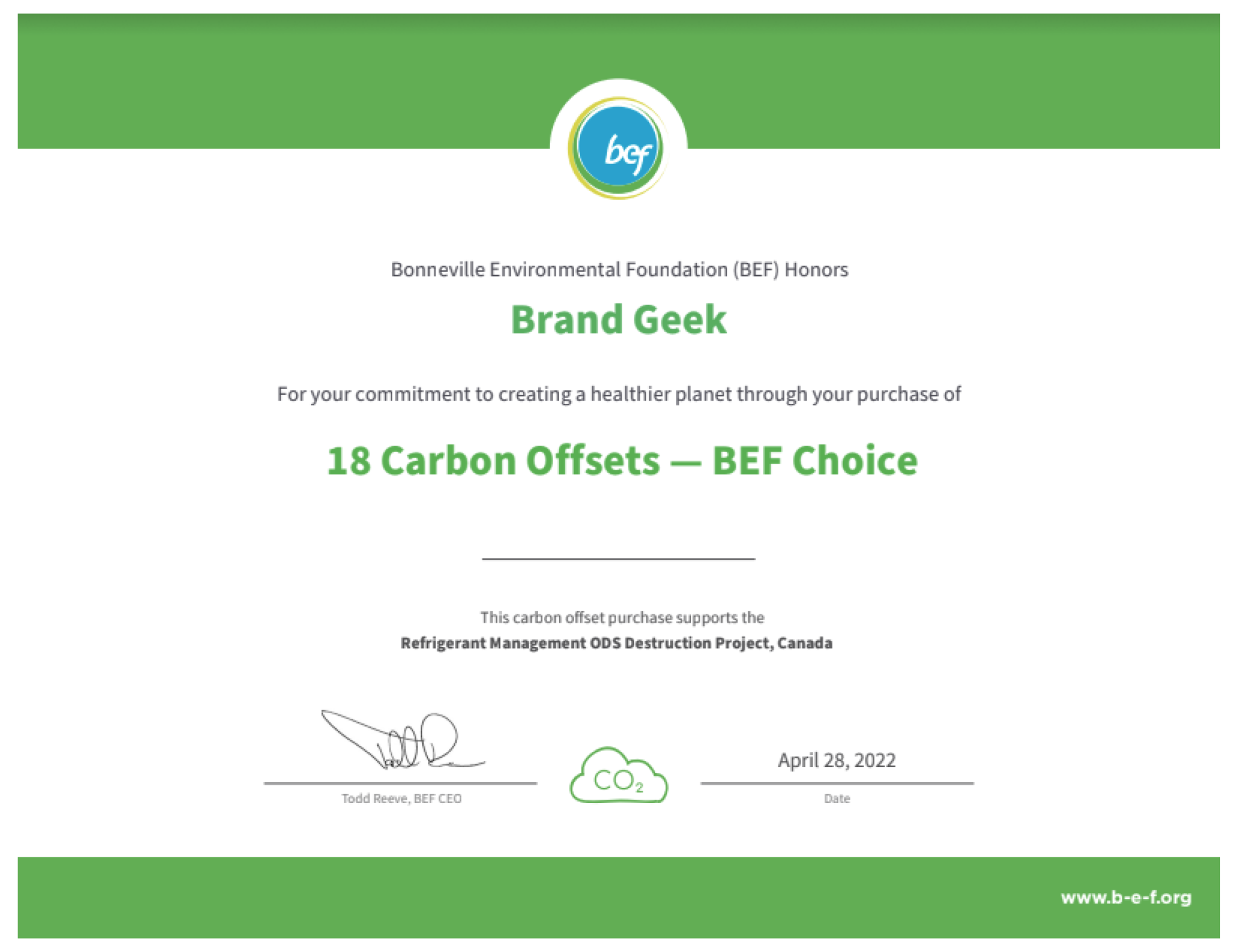Brandgeek proudly supports Mountain Area Preservation and is humbled to be…
Credibility Gap Results in an Injunction Ordering G.A.P Adventures Name Change in Trademark Infringement Case with Gap Inc.
“G.A.P Adventures shall have until September 1, 2011, to transition to a new name in the United States,” the June 24, 2011 federal court order states.
Ouch! That has got to hurt. Heck, it makes me shudder just thinking about it.
Can you imagine the feeling of being told that your eleven year old company has two months and one week to rebrand across the whole country? You have sixty eight days to identify, locate, and remove all of your branded marketing, advertising, and promotional material from the marketplace and replace it with a brand new identity. What would that mean in terms of time, focus, money, and other resources? What would you have to put on hold to make that happen? And, what would it cost? How much market share would you lose and how long would it take to regain it and start growing again? Bruce Poon Tip is about to find all this out, the hard way. Unless he appeals (which I presume he will) and ultimately prevails (which I presume he won’t).
Bruce is the co-founder of G.A.P Adventures (pronounce as you will), a pioneering and well respected leader in sustainable tourism. I have been following Bruce around the continent these past several months, both of us having attended SVI-Hollyhock, SVN, & Sustainable Brands, where he was presenting (I too presented at Sustainable Brands). Bruce’s company does some amazing work making a difference in the world through adventure travel and eco tours. Unfortunately, this awesome company is soon-to-be previously known as G-A-P (as in gee-ay-pea) Adventures (not that anyone knew it as that, making it tragic and comedic).
You see, G.A.P Adventures’ branding adventures with using a famous mark for unrelated services brought it into a battle with The Gap, Inc. (yes, the Gap). Like it or not, The Gap is one of the planet’s more famous clothing stores, which has expanded into a famous lifestyle brand. The Honorable Judge Alvin Hellerstein of the Federal District Court for the Southern District of New York presided over the battle and he ruled last Friday that G.A.P Adventures infringed on The Gap’s trademark. He gave G.A.P Adventures 68 days to rebrand in the United States and completely cease using the word “gap” when referring to its company. 11 years of goodwill, gone in 68 days! That’s a drastic result. So, how did G.A.P Adventures find itself on this path?
The Court found that Poon Tip adopted his “gap” brand knowing that it would capitalize on an association with the clothing company and that he acted to strengthen this association over time, stating:
[framed_box]Defendant’s use of “gap” in its name, however spelled, is likely to cause consumers to believe, if only initially, that there is likely a relationship or sponsorship between plaintiffs and defendant, and defendant has found this association useful in attracting potential consumers to its website and concept stores.[/framed_box]So, mooching off The Gap’s brand recognition (aka goodwill), even if only to get someone in the door, is infringing. I think that makes sense.
The court weighed the likelihood of confusion factors as follows:
Strength of Gap’s marks The Gap
Similarity of marks The Gap
Similarity of goods/services The Gap
Likelihood of overlapping brand expansion Neutral or G.A.P
Actual consumer confusion The Gap
Defendant G.A.P Adventures’ good or bad faith The Gap
Quality of Defendant G.A.P Adventures’ services Neutral
Sophistication of consumers Neutral
Based on the evidence and testimony provided in the case, the Court found G.A.P Adventures infringed on The Gap’s marks and engaged in unfair competition with The Gap. It ruled against The Gap on its trademark dilution claims, finding that G.A.P Adventure’s use of “gap” neither blurred (weakened) nor tarnished (disparaged).
 At least for now, in the Southern District of New York, goods need not be identical or even related, for there to be trademark infringement. If a substantial portion of the relevant consumer population perceives there to be a relationship between the infringer and trademark owner that does not exist, based on their marks, then trademark infringement may be found.
At least for now, in the Southern District of New York, goods need not be identical or even related, for there to be trademark infringement. If a substantial portion of the relevant consumer population perceives there to be a relationship between the infringer and trademark owner that does not exist, based on their marks, then trademark infringement may be found.






While the effect on G.A.P. is real, I believe the impact of this case is the new notion that the offerings need not be similar for trademark infringement to occur. This opens the floodgates to challenges from far afield, no?
Yes, Duane, you are exactly right!
The judge in this case really created a hybrid of dilution and infringement law (why he didn’t call it that, who knows).
Infringement normally happens in cases of the same or similar marks used on identical or related goods/services, whereas dilution is the cause of action that applies when the mark is famous, thus their trademark protection extends to goods/services that are unrelated to those offered under the famous mark. The judge in this case found The Gap’s marks to be famous but not technically diluted (since there was no blurring or tarnishment), while also finding that G.A.P Adventures intentionally traded off The Gap’s goodwill (their internal documents indicated that their target consumers are those who shop at The Gap, and there was a fair amount of evidence of actual confusion as proved by survey evidence). Thus, new law is born!
I am sure this case will be appealed, so we’ll have to see what the Second Circuit does with it. For now, anyone doing business in New York definitely need be aware that the lines between infringement and dilution have been blurred (pun intended).
Thanks for reading and commenting, Duane!
The infringement decision is a ridiculous and disturbing holding, ripe for appeal. I feel like there must be something missing from your post that makes the final ruling make sense. Judge Hellerstein is a qualified and respected jurist, and I can’t help but wonder what happened (or failed to happen) in the case for the decision to come out this way.
Thanks for reading and commenting, Tom. I’m sure my post misses a lot of things, which is why I linked the Order. That said, what would be the remedy (and do you think there should be one) when a company is found to intentionally trade on the goodwill of a famous brand yet the act does constitute blurring or tarnishment under the FTDA?